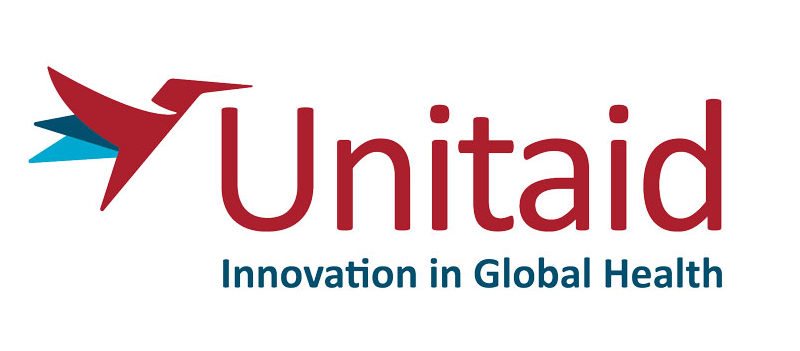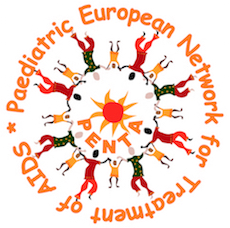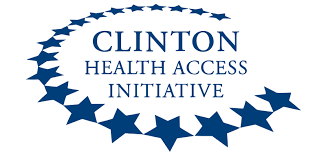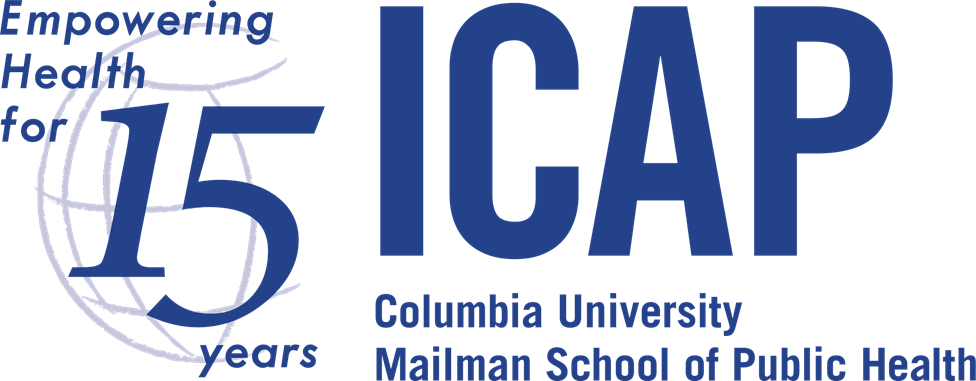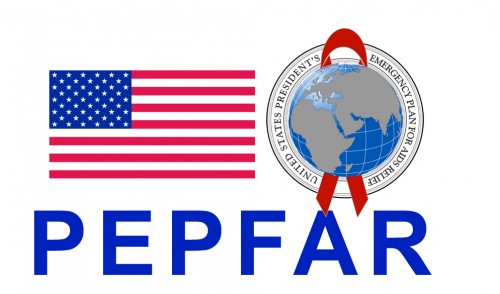Trial design
Authors: Anna Turkova1 and Theodore Ruel2
Reviewers: Deborah Ford1, Ellen Chadwick3, Diana Gibb1 and Elaine Abrams4
1University College London, United Kingdom; 2University of California, San Francisco, USA; 3Northwestern University, Chicago, IL, USA; 4ICAP at Columbia University, New York, NY, USA
Comments were also provided by the Division of Antiviral Products of the United States Food and Drug Administration and by representatives of the European Medicines Agency and members of the European Medicines Agency Paediatric Committee. Any views expressed in this publication by employees of the United States Food and Drug Administration or the European Medicines Agency, or members of the European Medicines Agency Paediatric Committee, are their own and may not be understood or quoted as being made on behalf of or reflecting the position of the United States Food and Drug Administration or of the European Medicines Agency or any of its committees or working parties.
|
Pharmacokinetic modelling
Authors: Paolo Denti1, Mark Mirochnick2 and Tim R. Cressey3–5
Reviewers: Helen McIlleron1, Brookie Best6 and Adrie Bekker7
1University of Cape Town, South Africa; 2Boston University School of Medicine, MA, USA; 3Chiang Mai University, Thailand; 4Harvard T.H. Chan School of Public Health, Boston, MA, USA; 5University of Liverpool, United Kingdom; 6University of California, San Diego, USA; 7Stellenbosch University, Cape Town, South Africa
|
Pregnant and breastfeeding women
Authors: Stein Schalkwijk1, Angela Colbers1 and Mark Mirochnick2
Other contributors: David Burger1
Reviewers: Gerhard Theron3, Alice Stek4, Lynne Mofenson5
1Radboud University Medical Center, Nijmegen, Netherlands; 2Boston University, MA, USA; 3Stellenbosch University, Cape Town, South Africa; 4University of Southern California, Los Angeles, USA; 5Elizabeth Glaser Pediatric AIDS Foundation, Washington, DC, USA
|
Coinfections
Authors: Anthony J. Garcia-Prats1 and Pablo Rojo2
Other contributors: Giuseppe Indolfi3, Helen McIlleron4 and Helena Rabie1
Reviewers: Mark Cotton1 and Moherndran Archary5
1Stellenbosch University, Cape Town, South Africa; 2Hospital de 12 Octubre, Universidad Complutense, Madrid, Spain; 3Meyer Children’s University Hospital, Florence, Italy; 4University of Cape Town, South Africa; 5University of KwaZulu-Natal, Durban, South Africa
|
Acceptability
Authors: Marc Lallemant1,2
Contributor: Victor Musiime3,4
Reviewers: Janice Lee5 and Diana F. Clarke6
1Program for HIV Prevention and Treatment, Institut de Recherche pour le Développement, Marseille, France; 2Chiang Mai University, Thailand; 3Makerere University, Kampala, Uganda; 4Joint Clinical Research Centre, Kampala, Uganda; 5Drugs for Neglected Diseases initiative, Geneva, Switzerland; 6Boston Medical Center, MA, USA
The authors are grateful for the input received from the European Paediatric Formulations Initiative and the IQ Consortium Drug Product Pediatric Working Group, especially Catherine Tuleu (University College London, Chair, European Paediatric Formulations Initiative) and David Cheng Thiam Tan (AbbVie, Co-Chair, IQ Consortium) as well as Trupti Dixit (independent), Eleni Dokou (Vertex), Elizabeth Galella (Bristol-Myers Squibb, Co-Chair, IQ Consortium Drug Product Pediatric Working Group), Melissa Keeney (Eli Lilly), John Morris (AbbVie), Yogesh Patil (Amgen), Fabrice Ruiz (Clinsearch), Smita Salunke (University College London), Daniel Schaufelberger (Janssen), Julia Schiele (AbbVie) and Robert L. Ternik (Eli Lilly).
|
Community engagement
Authors: Djamel Hamadache1 and Polly Clayden2
Other contributors: Dr Sarah Bernays3,4 and Abi Carter5
Reviewers: Marissa Vicari6, Mercy Ngulube5, Gareth Tudor-Williams7 and Janice Lee8
1Independent consultant, London, United Kingdom; 2HIV i-base, London, United Kingdom; 3Sydney Medical School, Australia; 4London School of Hygiene and Tropical Medicine, United Kingdom; 5Children's HIV Association, London, United Kingdom; 6International AIDS Society, Geneva, Switzerland; 7Imperial College London, United Kingdom; 8Drugs for Neglected Diseases initiative, Geneva, Switzerland
Special thanks to Sarah Bernays, Abi Carter and Djamel Hamadache for sharing case studies and young people’s experiences as trial participants.
|
Target product profiles
Authors: Diana F Clarke1, Fernando Pascual2 and Atieno Ojoo3
Reviewers: Marc Lallemant4,5, Vinod Arora6, Paul La Barre3, Jonathan Howard Brand3 and Nandita Sugandhi7
1Boston Medical Center, MA, USA; 2Medicines Patent Pool, Geneva, Switzerland; 3UNICEF, Copenhagen, Denmark; 4Program for HIV Prevention and Treatment, Institut de Recherche pour le Développement, Marseille, France; 5Chiang Mai University, Thailand; 6Medicines Patent Pool, Gurgaon, Haryana, India; 7Texas A&M Health Science Center, College Station, USA; 8ICAP at Columbia University, New York, NY, USA
|
Product commercialization
Authors: Nandita Sugandhi1, Fernando Pascual2 and Vineet Prabhu3
Other contributors: Diana F. Clarke4 and Atieno Ojoo5
Reviewers: Carolyn Amole6 and Victor Musiime7,8
1ICAP at Columbia University, New York, NY, USA; 2Medicines Patent Pool, Geneva, Switzerland; 3Clinton Health Access Initiative, Boston, MA, USA; 4Boston Medical Center, MA, USA; 5UNICEF, Copenhagen, Denmark; 6Clinton Health Access Initiative, New York, NY, USA; 7Makerere University, Kampala, Uganda; 8Joint Clinical Research Centre, Kampala, Uganda
Generous support from Unitaid enables the work of the Clinton Health Access Initiative on optimal ARV drugs for children.
|
Regulatory filing
Authors: Linda Lewis1, Melynda Watkins1 and Francesca Rocchi2,3
Reviewers: Yodit Belew4, Andrea Ecker5 and Victor Musiime6,7
1Clinton Health Access Initiative, Boston, Massachusetts, MA, USA; 2Bambino Gesù Children Hospital, Rome, Italy; 3PENTA Foundation, Padua, Italy; 4United States Food and Drug Administration, Washington, DC, USA; 5European Medicines Agency, London, United Kingdom; 6Makerere University, Kampala, Uganda; 7Joint Clinical Research Centre, Kampala, Uganda
Comments were also provided by the Division of Antiviral Products of the United States Food and Drug Administration and by representatives of the European Medicines Agency and members of the European Medicines Agency Paediatric Committee. Any views expressed in this publication by employees of the United States Food and Drug Administration or the European Medicines Agency, or members of the European Medicines Agency Paediatric Committee, are their own and may not be understood or quoted as being made on behalf of or reflecting the position of the United States Food and Drug Administration or of the European Medicines Agency or any of its committees or working parties.
The work of the Clinton Health Access Initiative on optimal antiretroviral drugs for children is made possible through the generous support of Unitaid.
|
Pharmacovigilance
Authors: Ali Judd1, Intira Jeannie Collins1, Hiwot Haile-Selassie2, Natella Rakhmanina3 and Miriam Sturkenboom4
Other contributors: Françoise Renaud2
Reviewers: Andy Stergachis5 and Karen Cohen6
1University College London, United Kingdom; 2World Health Organization, Geneva, Switzerland; 3Elizabeth Glaser Paediatric AIDS Foundation, Washington, DC, USA; 4University Medical Center Utrecht, Netherlands; 5University of Washington, Seattle, USA; 6University of Cape Town, South Africa
|

